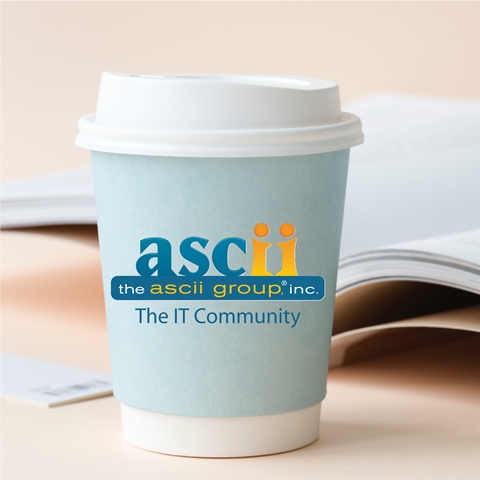Red Hat, Inc., the world’s leading provider of open source solutions, today announced the general availability of Red Hat OpenShift 4.5, the latest version of the industry’s most comprehensive Kubernetes platform. Red Hat OpenShift 4.5, which includes the general availability of OpenShift Virtualization, is designed to help organizations break down application barriers between traditional and cloud-native infrastructure and extend control over distributed resources.
“Assessing Kubernetes for Hybrid and Multicloud Application Portability”
According to Gartner, “By 2022, more than 75% of global organizations will be running containerized applications in production, which is a significant increase from fewer than 30% in 2019.”1 While this report indicates that cloud-native applications are the future of business innovation and the focus of new application development, many organizations still have large investments in business-critical applications that run as traditional virtual machines (VMs). Red Hat OpenShift now includes OpenShift Virtualization, a new platform feature that enables IT organizations to bring standard VM-based workloads to Kubernetes, helping eliminate the workflow and development silos that typically exist between traditional and cloud-native application stacks.
Breaking down walls between cloud-native and traditional workloads
First introduced at Red Hat Summit 2020 as a technology preview feature, OpenShift Virtualization is now generally available and included with Red Hat OpenShift Container Platform at no additional cost. Derived from the KubeVirt open source project, OpenShift Virtualization enables organizations to develop, deploy and manage applications consisting of VMs alongside containers and serverless functions, all in one modern Kubernetes platform running on bare-metal infrastructure. With OpenShift Virtualization, Red Hat brings traditional application stacks forward into a layer of open innovation, enabling customers to truly transform at their own speed.
By bringing new and existing applications to the same architecture, OpenShift Virtualization provides a consistent development experience and turbocharges an organization’s ability to deliver quickly on innovation. Once VMs are migrated to and managed by Red Hat OpenShift, they can be containerized over time, or be maintained as virtual machines. This allows users to develop and deliver hybrid applications built on containers and VMs to run side-by-side on the same platform.
Increased flexibility and choice for underlying infrastructure
Red Hat OpenShift 4.5 also introduces full-stack automation for VMware vSphere deployments, making it “push-button” easy to deploy Red Hat OpenShift on top of all currently supported vSphere environments. With full-stack automation, the administrator only needs to provide credentials to a vSphere deployment, and the installer provisions all of the resources needed, enabling a faster initial setup experience and easier ongoing management and maintenance. This adds to OpenShift’s existing support for VMware vSphere deployments on pre-existing infrastructure, which provides administrators the flexibility to deploy OpenShift in highly customized vSphere environments.
Over time, the full-stack automation installation experience has expanded to include AWS, Google Cloud Platform, Microsoft Azure, Red Hat Virtualization, and Red Hat OpenStack Platform, allowing customers to deploy OpenShift clusters across different clouds and on-premises with the same fully automated experience. Now with the ability to fully automate vSphere deployments, Red Hat makes it easier for organizations to run an enterprise container platform on existing virtual infrastructure, providing organizations even more choice when it comes to their underlying infrastructure platform.
Customer success on Red Hat OpenShift
More than 2,000 customers globally use Red Hat OpenShift to power cloud-native infrastructure, from those that are just beginning to explore the benefits of containerized applications to organizations delivering cloud-native enterprise applications into production. More than just a powerful, scalable and flexible platform to digitally transform existing workloads, OpenShift also provides a launchpad for next-generation applications like AI/ML, data services and analytics, edge computing and more. Industry leaders like BrianzAcque, Condis Supermercats, Edenor, ExxonMobil and Lotte Card are among the global organizations using Red Hat OpenShift to underpin their cloud-native strategies to not only digitally transform their operations but also differentiate their services in increasingly competitive markets.
Availability
Red Hat OpenShift 4.5 is now generally available. OpenShift Virtualization is available within the OpenShift console as a supported operator in the Operator Hub.
Supporting Quote
Ashesh Badani, senior vice president, Cloud Platforms, Red Hat
“Since its creation, we have worked to make Red Hat OpenShift a platform that enables customers to embrace cloud-native approaches while also supporting existing traditional applications. Red Hat OpenShift continues to forge this path by bringing virtualization to Kubernetes without dragging Kubernetes back to legacy virtualization infrastructure. With OpenShift, our customers can progress their infrastructure forward to take advantage of cloud-native advances without neglecting past infrastructure investments.”
Additional Resources
- Learn more about Red Hat OpenShift 4.5
- Read more about Red Hat OpenShift Virtualization
- Learn more about Red Hat OpenShift, the industry’s leading enterprise Kubernetes platform
- Find out more about Red Hat OpenShift and edge computing
- Learn more about how Red Hat Advanced Cluster Management for Kubernetes helps drive greater cloud-native management for OpenShift
- Read more about Red Hat’s latest developer tools available for building cloud-native workloads
Connect with Red Hat
- Learn more about Red Hat
- Get more news in the Red Hat newsroom
- Read the Red Hat blog
- Follow Red Hat on Twitter
- Join Red Hat on Facebook
- Watch Red Hat videos on YouTube
- Follow Red Hat on LinkedIn
About Red Hat, Inc.
Red Hat is the world’s leading provider of enterprise open source software solutions, using a community-powered approach to deliver reliable and high-performing Linux, hybrid cloud, container, and Kubernetes technologies. Red Hat helps customers integrate new and existing IT applications, develop cloud-native applications, standardize on our industry-leading operating system, and automate, secure, and manage complex environments. Award-winning support, training, and consulting services make Red Hat a trusted adviser to the Fortune 500. As a strategic partner to cloud providers, system integrators, application vendors, customers, and open source communities, Red Hat can help organizations prepare for the digital future.
Forward-Looking Statements
Certain statements contained in this press release may constitute “forward-looking statements” within the meaning of the Private Securities Litigation Reform Act of 1995. Forward-looking statements provide current expectations of future events based on certain assumptions and include any statement that does not directly relate to any historical or current fact. Actual results may differ materially from those indicated by such forward-looking statements. The forward-looking statements included in this press release represent the Company’s views as of the date of this press release and these views could change. However, while the Company or its parent International Business Machines Corporation (NYSE:IBM) may elect to update these forward-looking statements at some point in the future, the Company specifically disclaims any obligation to do so. These forward-looking statements should not be relied upon as representing the Company’s views as of any date subsequent to the date of this press release.
Red Hat, the Red Hat logo and OpenShift are trademarks or registered trademarks of Red Hat, Inc. or its subsidiaries in the U.S. and other countries.The OpenStack Word Mark is either a registered trademark/service mark or trademark/service mark of the OpenStack Foundation, in the United States and other countries, and is used with the OpenStack Foundation’s permission. Red Hat is not affiliated with, endorsed or sponsored by the OpenStack Foundation, or the OpenStack community.
1 Source: Gartner, Inc., “Assessing Kubernetes for Hybrid and Multicloud Application Portability,” Alan Waite and Marco Meinardi, June 3, 2020
Contacts
Media:
John Terrill
Red Hat, Inc.
jterrill@redhat.com
+1-571-421-8132














